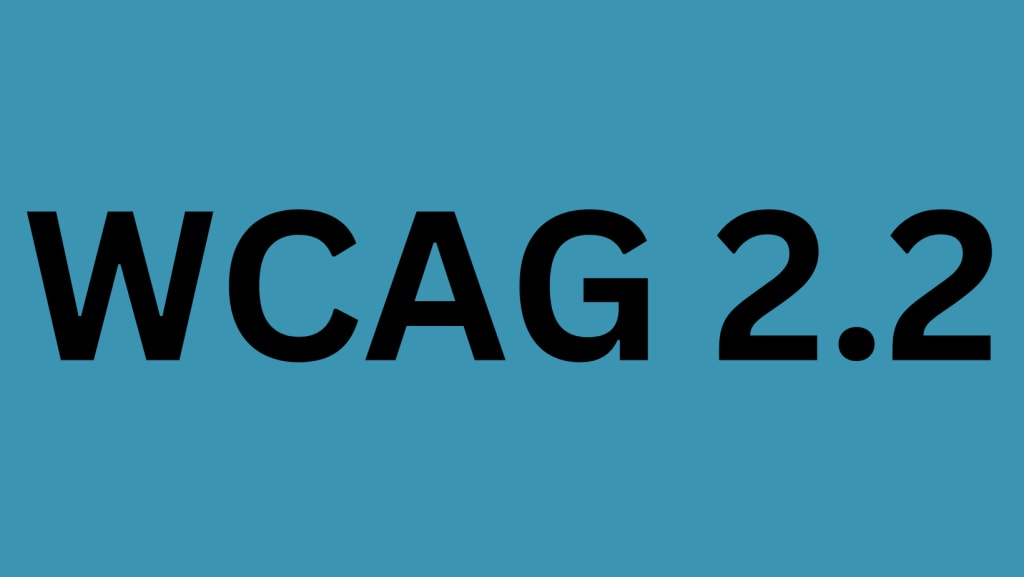Navigating the Future of Web Accessibility: A Comprehensive Guide to WCAG 2.2 Compliance
Empowering Inclusion: Mastering WCAG 2.2 for Tomorrow's Accessible Web Experience

In the tapestry of the digital era, websites serve as the threads that connect us to information, services, and each other. However, for millions of people with disabilities, these connections are often frayed or entirely severed due to web accessibility barriers.
Recognizing this, the World Wide Web Consortium (W3C) introduced the Web Content Accessibility Guidelines (WCAG) 2.2, a beacon guiding us towards a more inclusive web. This iteration builds upon previous guidelines, focusing on improving web accessibility for users with cognitive or learning disabilities, users with low vision, and users accessing the web on mobile devices.
The Heart of WCAG 2.2: Understanding Its Core
At its core, WCAG 2.2 extends the foundational principles laid out in WCAG 2.1: perceivable, operable, understandable, and robust (POUR). These principles ensure that web content is accessible by addressing various disabilities and barriers users may face.
The guidelines emphasize the importance of providing alternatives for non-text content, creating content that can be presented in different ways without losing information, making navigation accessible, and ensuring compatibility with current and future user tools.
What's New in WCAG 2.2?
WCAG 2.2 introduces several new success criteria aimed at addressing gaps in previous versions. These include:
- Success Criterion 2.4.11 - Focus Appearance (Minimum): Ensuring that keyboard focus indicators are visible and distinct, which is crucial for users with visual impairments or those who rely on keyboard navigation.
- Success Criterion 2.5.7 - Dragging Movements: Provide alternatives to drag-and-drop functionality, accommodating users with motor impairments who cannot perform precise movements.
- Success Criterion 2.5.8 - Pointer Target Spacing: Requiring sufficient spacing between clickable elements aids users with limited dexterity and those using touch screens.
These additions, among others, are not just incremental changes but significant steps forward in making web content accessible to a broader spectrum of users.
The Journey to Compliance: Practical Steps for Implementation
Achieving WCAG 2.2 compliance might seem daunting, but it is worth embarking on. Here's how you can start:
- Conduct an Accessibility Audit: Use automated tools and manual testing to identify areas where your website falls short of WCAG 2.2 guidelines.
- Prioritize Issues: Start with changes that have the most significant impact on accessibility and are feasible to implement.
- Educate Your Team: Ensure that everyone involved in your website's design, development, and content creation understands the importance of accessibility and is familiar with WCAG 2.2 guidelines.
- Implement Changes: From coding practices to content strategies, make the necessary adjustments to your website. This might involve redesigning elements for better focus indication, adjusting the spacing around clickable targets, or offering alternatives to drag-and-drop interfaces.
- Test and Iterate: Accessibility is not a one-and-done task. Continuously test your website with a variety of tools and user feedback, making adjustments as needed.
- Beyond Compliance: The Ripple Effects of Accessibility
Adopting WCAG 2.2 guidelines does more than just ensure compliance; it opens your website to a wider audience, improves the user experience for all visitors, and reflects a commitment to inclusivity.
Accessibility should not be viewed as a hurdle but as an opportunity to innovate and design with empathy, fostering a digital environment where everyone can participate equally.
Click here to explore more about accessibility & it's impact on UI/UX-
As we forge ahead in the digital age, let us commit to breaking down barriers and building bridges with accessibility at the forefront. Implementing WCAG 2.2 is not merely about adhering to guidelines but about contributing to a world where everyone, regardless of ability, can access information and services freely.
It is a call to action for creators, developers, and business owners to prioritize accessibility and, in doing so, to enrich the web with diversity and inclusion.
Let's embrace WCAG 2.2 as more than a set of requirements; let's view it as a roadmap to a more inclusive, accessible, and equitable digital world. Together, we can ensure that the web remains a space where everyone, everywhere, has the opportunity to connect, learn, and contribute.
About the Creator
steve mathews
A passsionate UI/UX designer. I'll be posting more about the UI/UX trends and the updates happeing in the UI/UX world.






Comments
There are no comments for this story
Be the first to respond and start the conversation.